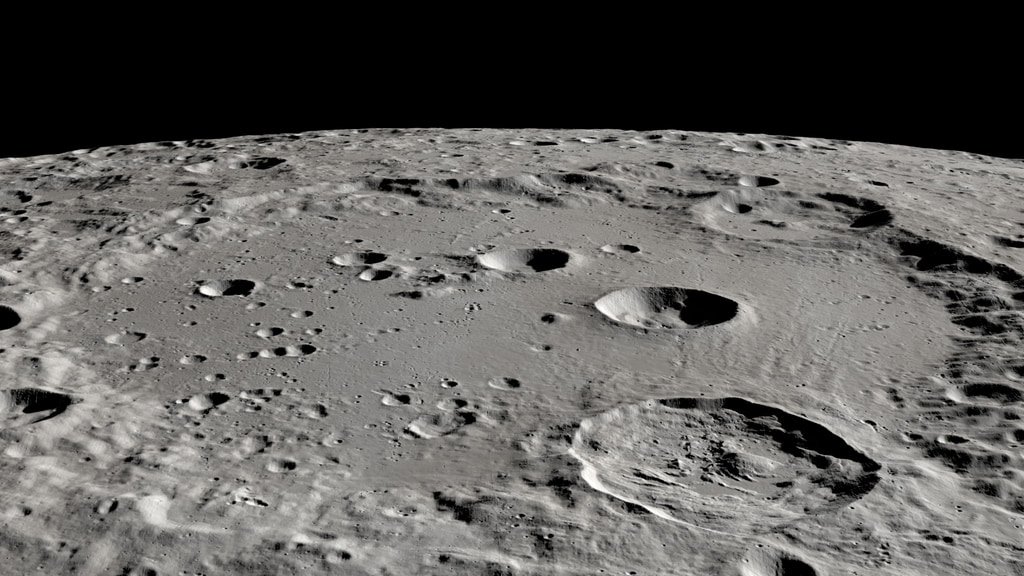Water on Moon Might Lead to Colonization or Trip to Mars

ECE Associate Professor Taskin Padir is hoping that the recent discovery of water on the moon might serve as a stepping stone before eventually reaching Mars.
There’s water on the moon. Colonization and a pit stop to Mars could be next.
Main photo: Researchers found evidence of water on the near side of the moon, a discovery that could increase the chances of one day having a human base on Earth’s satellite. Photo by NASA on The Commons
The next group of astronauts to make a lunar landing might not need to bring their own beverages. There’s water on the moon.
This discovery, which was published in Nature Astronomy earlier this week, is an important first step toward one day sustaining human life on the moon and beyond, says Taskin Padir, associate professor of electrical and computer engineering at Northeastern.
In February, the National Aeronautics and Space Administration selected a Northeastern student group co-advised by Padir to develop a new robotic system that could be part of a lunar mission in 2023. The mission intends to use the moon as a pit stop before reaching Mars.
This week’s discovery is encouraging for Padir, who develops autonomous robots for space exploration. “The idea is to use the moon as a stepping stone and a testing ground for future missions to Mars and deep space,” he says. “A base on the moon would be a game-changing capability for manned missions to Mars.”
Having a water source on the moon could eliminate the need for astronauts to bring their own drinking supplies, oxygen, and fuel. The hydrogen atoms in water could be repurposed for rocket propellant, and the oxygen atoms could be used for breathable air.

Researchers recently discovered water in Clavius, one of the largest and oldest craters on the moon. Located in the southern region of the moon’s near side, the crater is visible with binoculars between the first and third quarter phases. Photo by NASA
This multipurpose resource is crucial for future permanent settlements. “We’re not talking about going to the moon, touching the ground, and coming back,” Padir says. “We’re talking about sustaining the presence of humans.”

Taskin Padir is an associate professor of electrical and computer engineering. Photo by Matthew Modoono/Northeastern University
If colonies are ever established in outer space, robots will play a major role in creating habitable structures for humans to occupy. “Before we can send astronauts up there, someone has to build the infrastructure,” he says. “That’s the robot’s job.”
Part of Padir’s research focuses on bipedal, humanoid robots with the expectation that if human-like robots can operate machines, navigate certain terrains, and successfully exist in these celestial colonies, eventually humans can too.
The discovery of water brings that possibility a step closer. Scientists have speculated for years that water ice exists in the shadowy craters of the moon’s south pole, a region that receives no sunlight because of the angle. With temperatures reaching -400 degrees Fahrenheit, this section of the moon is impossible to access with modern technology.
But these most recent findings prove, for the first time, that water exists elsewhere in the moon’s soil, most notably in sunlit places that would be more conducive to human settlement.
It’s a surprising find because, unlike Earth, the moon has a relatively thin atmosphere, and the unabated solar glare usually destroys water molecules.
According to the report,the recently discovered water molecules are most likely trapped in lunar dust or glass, which could explain how those molecules persist despite the inhospitable environment.
The data from this location reveals that water concentrations in the soil are about 12 ounces per cubic meter. For reference, the Sahara desert has 100 times that amount of water.
“We face so many problems here on Earth,” Padir says. “And NASA discoveries like this inspire us to innovate, so that we can embark on these challenging missions and find new ways to help humanity.”
by Emily Arntsen, News @ Northeastern